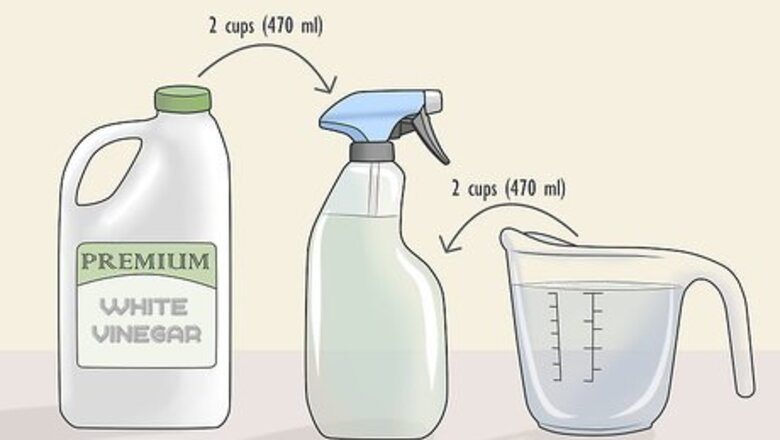
views
X
Expert Source
Erik BakirovCleaning Specialist
Expert Interview. 7 January 2021.
Using Vinegar for Light Stains
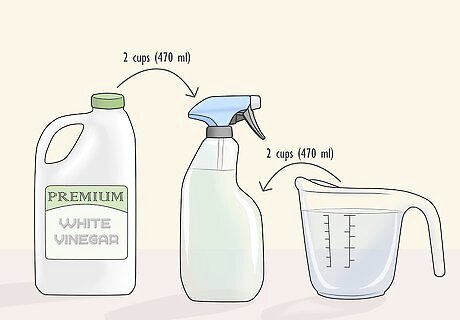
Mix a 50/50 water to white vinegar solution into a spray bottle. Distilled white vinegar is a natural acid that breaks down the minerals that hard water leaves behind. For lighter stains that haven’t set in yet, a vinegar mixture may be all you need. Start by pouring a 50/50 water to vinegar solution into a spray bottle. Shake the bottle so the two ingredients mix together. Keep the water and vinegar in proportion with each other. If you use 2 cups (470 ml) of vinegar, also use 2 cups (470 ml) of water. For most shower doors, a small spray bottle that you can pick up from a supermarket is perfect. Larger spray bottles are only necessary for very big cleaning jobs.
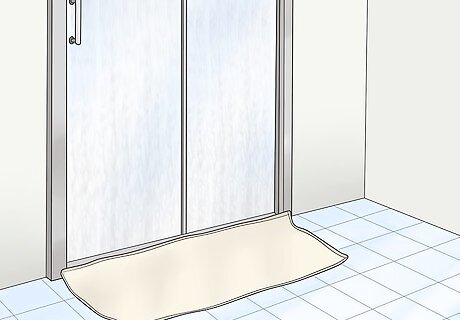
Lay a towel or cloth beneath the door in case the solution drips down. While this mixture isn’t harsh and won’t damage your floor if it drips, a wet floor is still a safety hazard. Arrange a towel underneath the door so it will catch and soak up any cleaning solution that drips off the door.
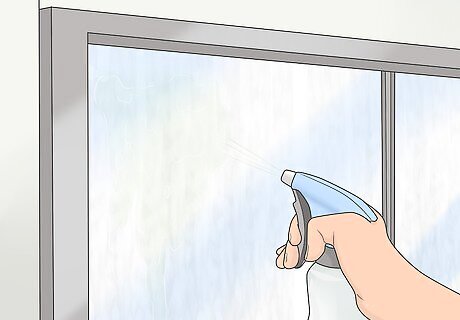
Spray the inside of the door with the vinegar-water mixture. Hard water stains are usually concentrated on the inside of the shower door, so focus here. Work in straight lines from top to bottom so you don’t miss any spots. Spray across the door from one side to the other, then make a new row below that one. Spraying in this pattern coats the whole door with the cleaning solution. If there are any crevasses that your spray bottle can’t reach, use a toothbrush. Spray the toothbrush with the solution and scrub any areas you can’t reach. This is common where the door frame meets the glass. If there are also hard water stains on the front of the door, you can spray the vinegar here as well.
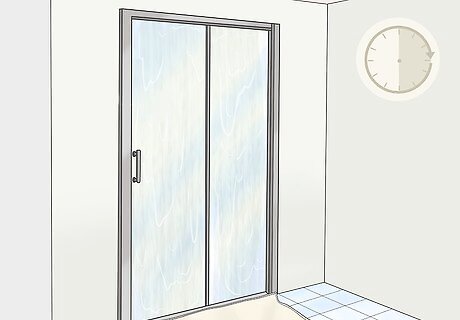
Let the solution sit for 30 minutes. This gives the vinegar time to break down any mineral deposits on the glass. While you wait, you should see the stain start lightening as the cleaning solution works.
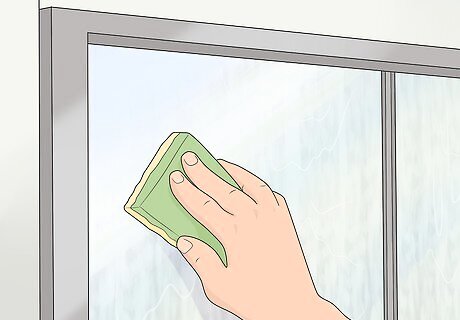
Wipe the solution off with a sponge. Use the scrubbing or rough side of a dish sponge to break up remaining mineral deposits. Wipe in a circular motion to work off any leftover stains. A soft-bristled brush will work as well. Paper towels will remove the cleaning solution, but may not take off remaining stains. A sponge or brush with bristles is better for breaking up mineral deposits. Don’t use a brush with hard bristles or a Brillo pad for this job. It will scratch the glass.
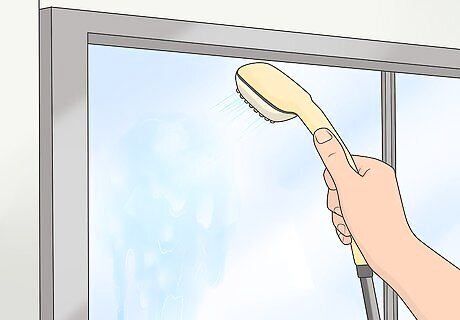
Rinse the door with clean water. A thorough rinse removes any remaining vinegar. Put some water in a spray bottle and spray the door down. Then wipe it clean with a towel by working top to bottom. You could also go inside the shower, close the door, and use the shower nozzle to rinse the door. This will rinse the door well, but you risk getting wet in the process.
Scrubbing Tougher Stains with Baking Soda
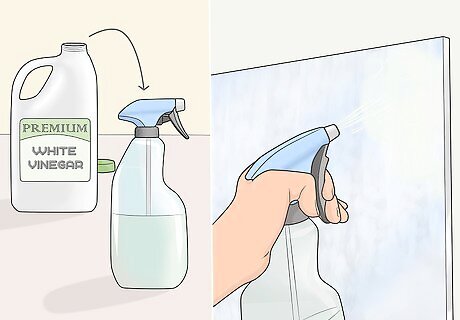
Wet the stain with full-strength vinegar and let it sit for 30 minutes. Some hard water stains don’t dissipate after being soaked in a vinegar-water cleaning solution. More stubborn stains require some scrubbing with baking soda. Prepare the stain by putting some undiluted white vinegar into a spray bottle. Then spray the vinegar onto any stains you see. You can also wet a rag with vinegar and apply it to the stains this way.
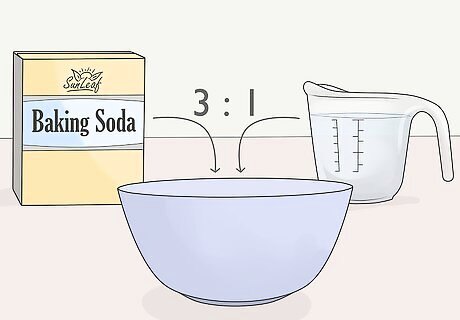
Mix a paste using a 3 to 1 baking soda and water ratio. While you wait the full 30 minutes for the vinegar to work, make a cleaning paste with baking soda and water. Pour some baking soda into a bowl and add a little bit of water. Mix the two together so they form a paste. A common mixture for baking soda paste is 3 parts baking soda to 1 part water. That means the bowl should have 3 times more baking soda than water. The mixture should be a paste, not a liquid. If it turns out too watery, adjust the mixture by adding more baking soda.
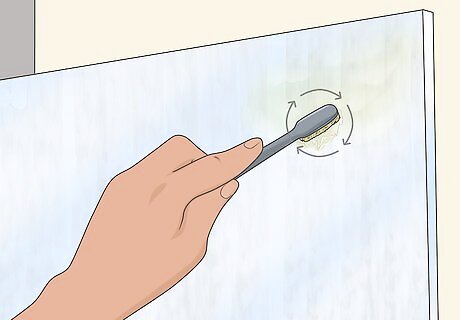
Scrub the stains with the paste and a toothbrush in a circular motion. Dip a toothbrush into the baking soda paste and scrub it onto the stains. Use a circular motion to break up the mineral deposits. Rub the mixture onto any stains you see. The baking soda may bubble a little when it touches the vinegar. Don’t worry, that’s normal and it isn’t harmful.

Spray another layer of undiluted vinegar on top of the paste. Finish the job by spraying the remaining vinegar on all the spots where you applied the baking soda paste. The resulting bubbly reaction helps lift off any remaining stains on the glass. Don’t wipe off the baking soda paste before spraying the vinegar. Let the two react together.
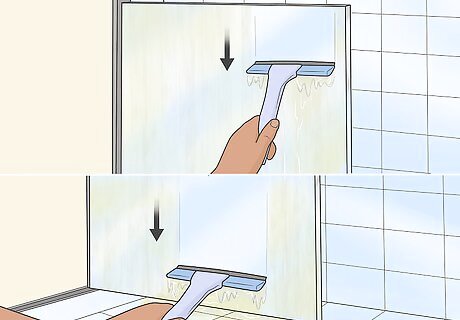
Squeegee the door clean by working top to bottom. A squeegee pushes off any remaining mineral deposits on the glass. Lay a towel under the door so nothing gets on your floor. Then work across the door. Wipe in a straight line from top to bottom. Apply even pressure when using the squeegee. Then move to the side and start a new line. Continue the process until you work across the whole door. You can also wipe down the door with a dry towel instead. This may leave behind some streaks and mineral deposits. If there are streaks leftover and you want to get rid of them, spray down the door with a 50/50 water to white vinegar solution. Then use a squeegee and wipe the door dry.
Removing Stains with Chemical Cleaners
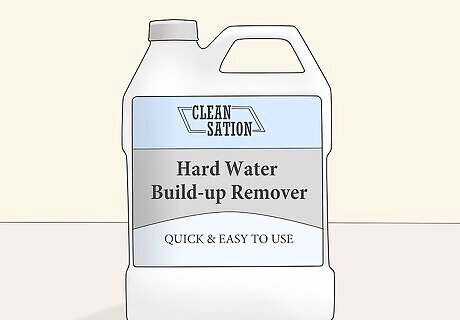
Get a mineral-removing solution from a hardware store. Commercial cleaning solutions work faster than most home remedies for removing hard water stains. If you don’t have an aversion to using chemical cleaners or your stains are very deep-set, then a mineral-removing solution is the best choice. Hardware stores have several brands and products that you could choose from. Ask an employee for a suggestion if you don’t know where to start.
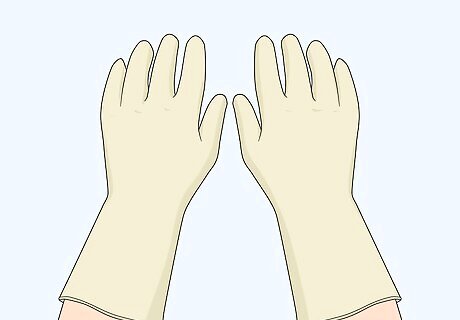
Wear gloves to protect your skin from the cleaner. Most cleaners won’t damage your skin unless they stay on for a long time, but they can still be abrasive. If you have sensitive skin, they can irritate you. Wear rubber cleaning gloves while working with these chemicals. Don't use cloth or fabric gloves. The cleaner will soak through and get on your skin. If you get any cleaner on your skin, rinse it off with clean, running water for 5 minutes.
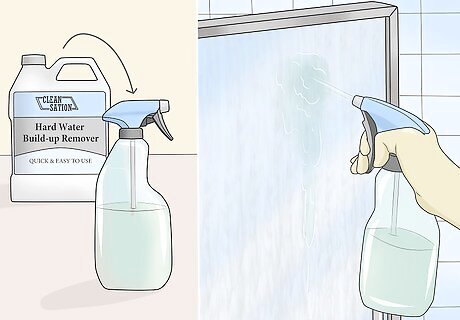
Spray the solution on the shower door. Hold the spray bottle straight out in front of you and keep your face away from the cleaner while you spray it. Work in a pattern from top to bottom and spray the whole door. Some cleaners don’t come in a spray bottle. If this is the case, wet a sponge with the cleaner and rub it on the door. Some products have different instructions. Always follow the manufacturer’s instructions printed on the product.
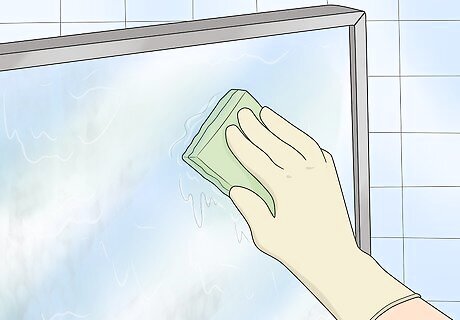
Scrub the door with a sponge until the stains disappear. Commercial cleaners usually don’t have to sit the same way that home remedies do. As soon as you finish spraying, get a sponge and wipe down the entire door. Product instructions usually say to continue wiping for a few minutes so the cleaner scrubs off stains. Follow the printed instructions on the product for directions on how long to scrub. Don’t use a bristled brush for chemical cleaners. They could splash the chemicals into your eyes.
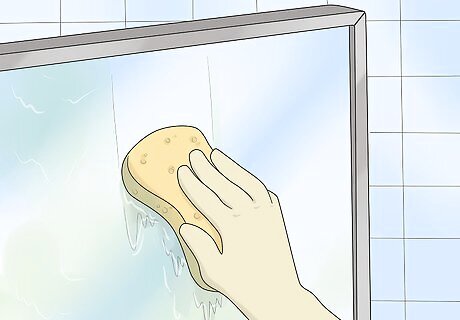
Wipe down the door with a wet sponge to remove all the chemicals. Either use a different sponge and wet it, or thoroughly rinse the sponge you used to scrub the cleaner. Then use the sponge to rinse the door and remove any leftover chemicals. You can finish up with a squeegee to prevent any streaks forming on your door.














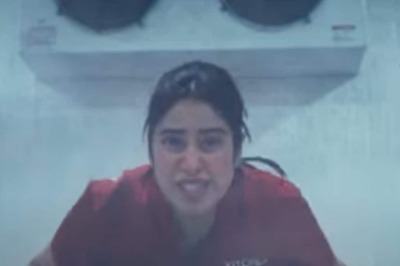

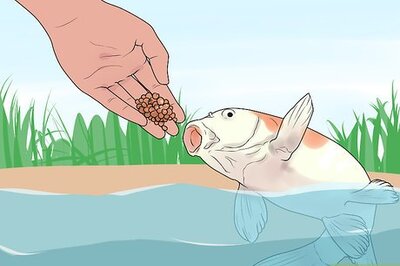



Comments
0 comment